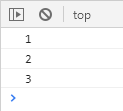【SpringMVC】SpringMVC通过Ajax给前端返回JSON
在SpringMVC项目中,使用JS静态资源,需要对该静态资源的请求放行。
只需要在springmvc.xml中配置:
<mvc:default-servlet-handler></mvc:default-servlet-handler>
即启用了Tomcat默认的处理Servlet,当没有在@RequestMapping中找到对应的请求路径时,会直接访问该路径的资源。
使用JSON,还需要添加JSON相关的Jar包。jackson-databind.jar、jackson-annotations.jar、jackson-core.jar
使用maven很简单,添加jackson-databind.jar依赖,会自动下载其余两个:
pom.xml
<dependency> <groupId>com.fasterxml.jackson.core</groupId> <artifactId>jackson-databind</artifactId> <version>2.9.9</version> </dependency>
- 前端使用Jquery的$.post()
<script src="${pageContext.request.contextPath}/jquery.min.js"></script>
<script>
$(document).ready(function () {
$("#testJson").click(function () {
$.post(
"handler/testJson",
function (datas) {
for (let i = 0; i < datas.length; i++) {
console.log(datas[i].id + "\n");
}
}
);
});
});
</script>
<button id="testJson">testJson</button>
- 后台使用一个学生类(Student)测试,使用注解@ResponseBody返回的不再时一个视图,不会被视图解析器解析为页面
返回的是一个List,传统的方式需要再JS中用eval()方法,将返回的数据转化为JavaScript可以处理的数据遍历输出。再SpringMVC中,仅仅返回List,前端就可以正常的遍历输出。
@ResponseBody @RequestMapping("testJson") public List<Student> testJson() { List<Student> students = new ArrayList<Student>(); Student stu1 = new Student(1, "zs"); Student stu2 = new Student(2, "ls"); Student stu3 = new Student(3, "ww"); students.add(stu1); students.add(stu2); students.add(stu3); return students; }
前端输出结果:



